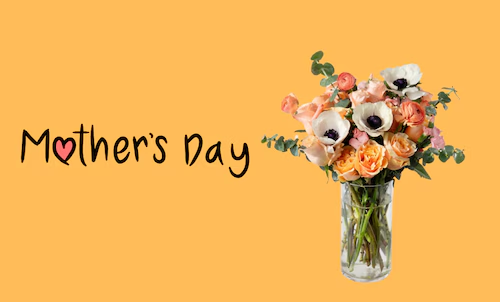IRENE TONGOI : Impacting on the slum youths
Irene Tongoi ventured into the Huruma slums within the affluent Runda Estate to give an education to the disadvantaged slum youths. At the time, she was a stay-home mum without a penny but armed with a degree in education, time in her hands and high on prayers. She believed that God would be her provider and started off with donations from a friend who believed in her dream when she shared it with her. From then on, the story of New Dawn Education Centre in Huruma village has been a miracle as she narrates to MWAURA MUIGANA.
After graduation with a degree in education at Kenyatta University in 1980, Irene taught for two years before taking up missionary work with -The Navigators, a Christian missionary group, in 1983.
It was there that she met and married a staff member of the group, now Rev. Dennis Tongoi, Executive Director of CMS (Church Mission Society) Africa. In 2000 the couple was sent on a missionary assignment in Eldoret for the next six years before returning to Nairobi when Rev. Tongoi was promoted as the National Director of the organisation.
Irene decided to be a stay-home mum to raise their three children. Raising her children in a safe and secure environment was exciting and fulfilling but she often thought of the many disadvantaged children without a secure environment for growth. As part of her Christian walk, she felt the need to reach out to them.
In 2001 she registered an organisation – New Dawn Kenya- to influence children’s thinking on sexuality, friendship, love and compassion for others using biblical principles. This would help growing up children understand how to relate well with others and understand how to relate with those affected and infected with HIV and AIDS.
The pioneers of this home-based programe were a group of eight young girls including her daughter.
The programe became popular by word of mouth and was successful. She ran it for four years but felt compelled to accommodate more. And so she included boys in the program realising they equally needed the same information. Currently the programe operates almost countrywide with the bulk of the children being in Nairobi. There are over 250 children in the programe.
While children as young as five years enroll, the core group is between Nine and 12 years. “We recognise that nine year-olds haven’t started being too curious and the sooner we inoculate them with the right information the better. So that when they are teenagers they are not tempted to endanger their well-being,” explains Irene who is the director of New Dawn Kenya. The beneficiaries go through life-skills training monthly in their own homes as well as in camps.
IDP’s amid Runda affluence…
Irene, a recent Executive Masters in Business Administration (MBA) graduate from Nairobi’s Inoorero University takes us through the project in her own words. “I still felt the need to reach out to children with financial challenges in meeting their basic needs since their issues are different. Unless their basic needs are met, they can’t be expected to effectively participate and benefit from such noble programes.
Through my church, Karura Community Chapel in Nairobi’s Runda estate, I learnt of a community of internally displaced people (IDP’s) living in the tiny Huruma Village within the Runda Estate. Runda Estate was once acres of coffee farms before been sold to developers.
Hence the displacement of the coffee casual workers who were lumped into a tiny piece of land within the estate that became Huruma Village. They lived in abject poverty and my church often gave them donations. However, I felt that this help wasn’t sustainable but I didn’t have anything concrete to offer.
Opportunity to assist…
In 2003 I visited the village as part of my church’s women ministry and spent an afternoon with women from the village. It was then that it dawned on me how much help they needed. Many of them started off as teenage mothers without education, land and jobs. Chances were they would forever wallow in a vicious cycle of poverty. Many of their children were primary school dropouts for lack of fees.
I began praying to offer a solution to them especially on youth education. A like-minded friend challenged me stating that we couldn’t claim to be educated and yet be insensitive and irrelevant to a community like Huruma. In addition, from some of the meetings I had attended at the Vision Conference facilitated by the Samaritan Strategy Africa Working Group, I was challenged to use what I had at hand to make an influence in society.
Towards the end of 2003 the World Bank conducted rural appraisal activities for poverty alleviation. A friend and staff at World Bank asked me to mobilise community leaders in Huruma village to strategise on poverty alleviation. Not only did I coordinate the meeting, but also sat in the discussions between World Bank consultants and the community leaders. This was then followed by a five-day vision conference in our church, for youths in Huruma in April 2005. About 100 youths attended.
The youths expressed their frustration at lack of opportunities to enhance their education and how this eventually limits them from job opportunities. They needed individuals to sponsor their education. After that conference some of them kept calling and pleading me to assist them go back to school. Although I didn’t have much money, I kept feeling that I should do something.
In October 2005, I shared my plan to start a school with, my pastor and my husband and requested them to pray with me. I revisited Huruma village and asked the youths who were willing to return to school to register with me. 80 boys and girls registered, half of who qualified academically to join form one. The other 40 were willing to have remedial education.
Birth of New Dawn…
In December 2005, I shared with a friend my New Year plans to start a secondary school in Huruma Village and she gave me some money to initiate my plan. Acquiring land to put up the school or money to rent a premise was a hurdle since there were no spacious structures in the village that I could rent for a classroom.
I approached The Interdenominational Christian Church Denomination (ICCD) in Huruma village, who allowed me to use their small mabati structure as a form one classroom. The Catholic Church in Huruma offered us their small structure in the village for one year for the 40 students undertaking remedial education. With five volunteer teachers, I was set to go.
Although the structures were hot and dusty, the students were determined and in the absence of desks and books, they sat and wrote on benches. ICCD had a small mabati structure on the side, which we turned into a kitchen. We loved and cared for the students some of who were as old as 30 years. They were excited at the opportunity of a second chance in their education and took school seriously.
A pastor of a nearby akorino church approached me to buy their small mabati structure since they had moved out to a neighbouring village. My husband funded the purchase of the structure, which provided sleeping quarters for the students. However, we needed to refurbish the structure.
A friend from the UK who had been a member of my church and my prayer partner was aware of my project. She promised to visit and see what we were doing. On her return to Kenya, she connected me to a gentleman from Samaritan Pass, a relief organisation, whom she had mentioned to my project. He got interested, visited and donated money to build a form-two classroom. Just as I started wondering what I was going to do once the students got to form three, the villagers embraced and owned the project.
They would advise me on what to do and had their ears on the ground to get even the smallest space available to expand the school. They connected me to a man who owned a small structure and was willing to sell it. Without any idea where the money would come from, I asked the vendor to give me time.
Unbelievably, a few days later a friend from the church gave us Ksh 130,000. Within the same week another friend gave another donation, which was the exact amount needed to buy the plot and put up a form three class.
Help at last…
The next call I got from a church friend named Loraine changed things for the better. She brought along her friends, an American couple Larry and Nelly Warren from the African Leadership, an American organisation that assists in identifying and supporting projects. They were impressed by the humble school and gave money for the school budget. To date, the organisation has been our main supporter.
We still needed room for a form four class. I had spotted a small portion of land belonging to the Nairobi city council adjacent to the village, which the villagers had shared out for farming. In 2009, I negotiated with community and was allowed to put a temporary structure on part of the land for a form four class. The next headache was where to get the money to put up the structure.
At the same time we needed offices, administrators and secure classrooms for the expanding school. Africa Leadership came in handy. Ten-year-old Ellie Ambrose from Tennessee USAA, heard a friend sharing about some of the challenges African children in the poor neighbourhoods faced, was touched and did a charity run that raised all the money needed to buy and fabricate four railway train metal cargo containers.
Today, out of the four containers we got, we have four classrooms, an office and a laboratory in the small piece of land. Finally, the entire secondary school is in one location. The Ellie Run for the African child, now in its tenth year, provides most of the budget for running the school. Ellie is in her first year in university. It is amazing how God keeps bringing partners to us and as a result the school has developed.
Achievements…
The first time we registered candidates for Kenya Certificate Of Secondary Education (KCSE), in 2009, two students excelled and were admitted to local Universities to study engineering. This was akin to a miracle since at the time; the school didn’t have science laboratories.
In 2010, two other students qualified for degree courses including nursing, at local Universities. In 2011, three students were enrolled for degrees in engineering, law and commerce respectively.
One boy out of those in the remedial class finished his secondary education in 2011 and has been admitted to do ICT at the Kenya Methodist University (KEMU), though he hasn’t found a sponsor as yet. His sister and one of his classmates are pursuing a Bachelor of Commerce at the university. Many others have joined colleges for diploma and certificate level courses.
The school is made up of 12 teachers who are all graduates except three. The other staff includes a principal, administrator, cleaner, gardener, two cooks and a watchman. In 2010, we secured eight additional containers that were fabricated so well to accommodate three blocks.
In August 2012, we launched the structure, which has three floors that accommodate an assembly hall, staffroom, two fully equipped science laboratories, a well-equipped computer lab, a media room and a library. One of the volunteer founder teachers, Ken Mugo, who later got a scholarship to the USA in 2012 helped raise Ksh 1.7 million to put up and stock a modern fully computerized library.
The school has received a donation of 60 kindle readers which when connected to the internet can down load text books and reference materials that will benefit the students,” concludes a proud Irene.
Published on February 2013




